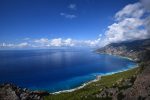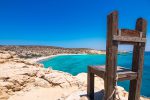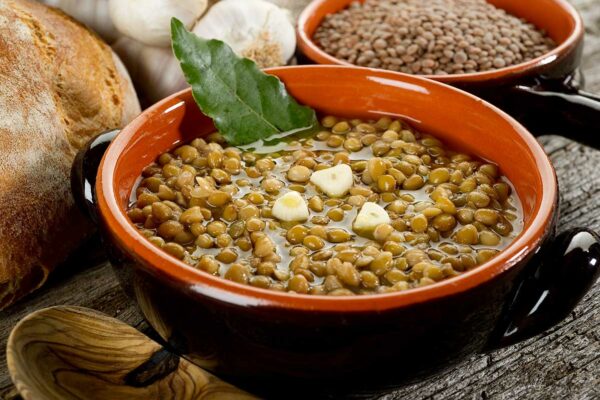Ancient Greek Gods and Their Connection to Crete
The mightiest of all the twelve Olympian gods of Greece, Zeus, calls Crete his birthplace. The twin gods, Apollo and Artemis, came to be on the small Paximadia islets on the southern coast of Crete according to local mythology, albeit Hesiod puts them on Delos. Legends tend to contradict one another, but since Artemis was the protector goddess of ancient Aptera, Paximadia makes sense as the goddess’s birthplace.
1. Zeus, King of the Olympian Gods
Zeus is the son of Titans Cronus and Rhea, and the story of his birth is intriguing. His mother, Titaness Rhea, was also Cronus’ sister, not only his wife. The parents of the couple, Gaia and Uranus, predicted that Cronus, the Titans’ leader at the time, would be overthrown by his son. Cronus tried to outsmart his destiny, regurgitating all his children: Hestia, Demeter, Hera, Hades, and Poseidon suffered this abominable ordeal as infants. To protect her youngest, Rhea hid on Crete, where she gave birth to Zeus, and instead of handing the baby to Cronus, she wrapped a rock in swaddling clothes, which the Titan promptly swallowed.
On Crete, Zeus was in the care of Amalthea – in some legends, a nymph, in others a goat who hid the baby god in the Dictaeon Antron, the Diktaean Cave (Psychro Cave) on the Lasithi Plateau. You can visit this cave, a sacred destination for Cretans, not just for its connection to Zeus, but also as a former worship place for a Minoan goddess – possibly Pasiphae, Ariadne (and her lover Dionysus), or Phaedra. Greek mythology also identifies the Diktaean Cave as the home of the harpies.
2. Apollo, the Most Beloved Greek God
Apollo was the son of Zeus and Titaness Leto.
Ancient Greek grammarian Antoninus Liberalis notes a cult of Leto the Grafter at Phaistos on Crete. According to the legend of Cretan shepherd Lampros and his stunningly beautiful wife, Galateia.
Unknown to Lampros, Galateia gave birth to a daughter and raised her as a boy named Leukippos. As the girl grew older, her beauty surpassed expectations. Galateia went to the temple of Leto to beg the goddess to turn Leukippos into a real boy, and the goddess fulfilled her wish.
“In commemoration of this miracle, the citizens of Phaistos on Crete performed sacrifices to Leto the Grafter because she had grafted male organs onto a maiden” (Antoninus Liberalis 17)
But Leto’s greatest gift to humankind were her twins, Apollo and Artemis.
Apollo (in Minoan culture identified as Paiawon, worshiped on Crete) was the god of truth, prophecy, healing, archery, music and arts, knowledge, herds, flocks, and protection of the young. His most famous children are Asclepius (hero and god of healing and medicine) and Orpheus (poet, prophet, musician, and a virtuoso with the lyre or kithara).
3. Artemis, Forever a Maiden
Artemis was Apollo’s twin sister, daughter of Zeus and Titaness Leto, and the goddess of the hunt, the wilderness, wild animals, the Moon, childbirth and midwifery, and chastity. She was a protector of young girls and brides-to-be and vowed to remain a virgin forever. Zeus himself granted his daughter’s wish. Robert Graves offers a beautiful version of Artemis’s prayer in his work The Greek Myths, where the goddess’s connection with Crete is evident too:
“Pray give me eternal virginity; as many names as my brother Apollo; a bow and arrows like his; the office of bringing light; a saffron hunting tunic with a red hem reaching to my knees; sixty young ocean nymphs, all of the same age, as my maids of honor; twenty river nymphs from Amnius in Crete, to take care of my buskins and feed my hounds when I am not out shooting; all the mountains of the world; and, lastly, any city you care to choose for me, but one will be enough because I intend to live on mountains most of the time.”
4. Hera, the Queen Goddess of Olympus
Both sister and wife to Zeus (daughter of Titans Cronus and Rhea), Hera was the most feared goddess of them all. Jealous and vindictive, her role was to protect marriage, women, childbirth, and family. She remained forever faithful to her husband, Zeus, despite his many infidelities; thus, she is also associated with monogamy and fidelity. She is the mother of Hḗphaistos, the Greek god of fire, and Ares, the god of war. When Eurystheus, the king Mycenaean stronghold Tiryns, wanted to sacrifice the Cretan Bull to Hera, she refused the offering as it represented glory on Heracles.
The Cretan Bull was a snow-white animal given to Cretan king Minos by the god of the sea, Poseidon. Minos had to sacrifice the bull to the god to confirm his right to rule Crete. But Minos considered the animal too beautiful to kill and sacrificed a different bull. To punish the king’s disobedience, Poseidon asked Aphrodite to make Pasiphaë, Minos’s wife, fall in love with the white bull. Cursed by the gods, Pasiphaë coupled with the animal, later giving birth to the famous Minotaur, a beast with the head and tail of a bull and the body of a man, ruler of the Minoan Labyrinth at Knossos.
5. Athena, the Bravest of All the Olympians
Athena, the virgin, emerged from Zeus’ forehead – a miraculous birth by all means – and was the goddess of wisdom, household crafts, and strategic warfare. She bestowed upon humans the gifts of cooking and sewing, and she was the patron of Athens, Greece’s current capital. The goddess won the patronage of the city after winning a contest against Poseidon. The win the patronage, each god offered the people of Attica one gift: Poseidon a salted-water spring, and Athena an olive tree, the symbol of peace and fruitfulness. When you visit the Acropolis in Athens, stop at the Sacred Olive Tree on the west side of Erechtheion’s porch. The goddess was the protector of Heracles, aiding him during his twelve labors. She was the patron of many Greek heroes, including Argos, Perseus, Bellerophon, Orestes, and Laertes. On Crete, Athena was associated with the Cretan goddess Aphaea, goddess of fertility and the agricultural cycle.
6. Poseidon, the Trident-bearing God of the Sea
Poseidon, the protector of seafarers, was the god of the sea, storms, earthquakes, and, oddly enough, horses and horse breeding. He was the older brother of Zeus and son of Cronus and Rhea. He played a significant role in the war against the Titans. On Crete, he was worshiped in the cave of Amnisos together with Eileithyia, the goddess of childbirth. Inscriptions in Linear B documenting the cult of Poseidon in Minoan Crete as Poseidon-Wanax (Enesidaone) were unearthed at Knossos. He is the further of the winged horse Pegasus, giant huntsman Orion, Atlas (the first king of Atlantis), merman Triton, and cyclops Polyphemus.
7. Aphrodite, the Goddess of Love
When Cronus severed his father’s Uranus genitals, throwing them into the sea, the foam resulting from the semen gave birth to Aphrodite, the most beautiful Olympian goddess. Some legends place her birthplace near Paphos, on the island of Cyprus, while others see her emerging from the waves on the shores of Cythera (today Kythira), an island on the trade route between Crete and the Peloponnese.
Aphrodite was the goddess of love, beauty, sexuality, and a protector of seafarers, courtesans, and prostitutes. She was Hḗphaistos’s wife and had romantic entanglements with Ares, Poseidon, Hermes, Dionysus, Adonis, and Anchises. Aphrodite is the mother of Eros, the god of love and sex, resulted from her affair with Ares. She also gave birth to the three Graces after her relationship with Dionysus. The famous Trojan hero Aeneas is her son, too, born after her relationship with Anchises.
A sanctuary – unique in Crete and Greece – of Hermes and Aphrodite was unearthed at Kato Symi, in Viannos (Heraklion regional unit), in 1972. The sanctuary stands some 1200 meters above sea level and offers splendid views of the south coast. It was used continuously for about 1000 years, from the Minoan Protopalatial period up to Roman times.
8. Ares, the Quick-tempered Warrior
The god of courage, destruction, bloodlust, and war was Zeus and Hera’s son, an illicit consort to Aphrodite, and the father of god Eros and the Amazons, among others. Because of his quick temper and taste for violence, the Olympians did not favor him. The mortals, however, worshiped him, particularly on Crete and the Peloponnese during the Spartan expansion.
He was handsome and brave, traits that helped him win the affection of Aphrodite, who was married at the time to Hḗphaistos, the god of fire and volcanoes. The affair with Aphrodite did not go unpunished. Hḗphaistos trapped the naked lovers in an unbreakable chain-link net and dragged them to Mount Olympus to shame them in front of the other gods. Consequently, the gods banned him temporarily from Mount Olympus.
On Crete, you’ll find the ruins of a temple dedicated to Ares and Aphrodite at the archeological site Ellinika, between Agios Nikolaos and Elounda.
9. Hḗphaistos, the Gifted Blacksmith
After Zeus fathered Athena without a spouse, Hera gave birth to Hḗphaistos (Hephaestus) without his or any other consort’s help. The parthenogenic Hḗphaistos, however, was lees-than-perfect, having a lame foot. This handicap costed the god his place on Mount Olympus: Hera herself cast him off to the island of Lemnos, where he built his workshop. To punish his mother for this cruel abandonment, he captured her with invisible chains on a throne forged by his own hands and forced her to give him Aphrodite as his wife. The god eventually returned to Olympus, subdued by Dionysus with wine and padded dancers.
Hḗphaistos was exceptionally gifted: besides being the god of fire and volcanos, he was also the god of metalworking, stone masonry, forges, the art of sculpture, technology, and blacksmiths. He forged all the Olympian gods’ weapons, including Zeus’ scepter and aegis and Hermes’s helmet. He is also the maker of Achilles’ armor.
He fathered Erechtheus, the first king of Athens, and the nymph Thalia, among other children. Last but not least, he fashioned Pandora and her pithos (Pandora’s box) out of clay at the order of Zeus, who wanted to punish humankind with a “beautiful evil” for receiving the gift of fire from Prometheus.
10. Dionysus, Olympus’ Bad Boy
In some legends, Dionysus is the only one of the Olympians born of a mortal woman (Zeus and Semele from Phoenicia). Other myths attribute Dionysus’ parentage to either Zeus and Demeter (goddess of the harvest and agriculture) or Zeus and Persephone (Zeus’ daughter with Demeter, queen of the Underworld, and wife of Hades). Perhaps these obscure origins affected Dionysus enough to transform him into the bad boy of Mount Olympus.
He was the god of grape-harvest, wine-making, wine, fertility, ritual madness, religious ecstasy, and theatre. According to the Orphic Hymns, he was born on Crete. He was probably two-horned or bull-faced, suggesting a connection with the Sacred Bull venerated in Minoan times on the island.
“I call Diónysos the loud-roarer! Who wails in revel!
First-Born, two-natured, thrice-born, Vakkhic king,
Wild, inscrutable, cryptic, two-horned, two-shaped,
Bedecked in ivy, bull-faced, war-like, howling, holy,
Divine victim, feasted every other year, adorned with grapes, bedecked in foliage.
Evvouléfs, counselor, Zefs and Kóri bore you… on a secret bed, immortal Daimohn;
Listen, happy one to my voice!
Sweetly breathe on me with gentleness,
Be kind and grant my desire, with the aid of your chaste nurses!”
The fun-loving god was married to Cretan princess Ariadne, King Minos and Queen Pasiphaë’s daughter, and the Minotaur’s half-sister. She was in charge of the labyrinth at Knossos and helped hero Theseus defeat the Minotaur and exit the maze with a ball of thread (Ariadne’s string) that helped him retrace his steps back outside.
Some Greek mythology experts suggest that the Cult of Dionysus originated in Minoan Crete, bearing many similarities to the cult of ancient Zagreus. The Dionysian Mysteries have roots in Minoan Crete too. Masks used in the ritual worship of Dionysus were unearthed in a Minoan tomb near Phaistos.
11. Demeter, the Fertile One
Daughter of Cronus and Rhea, Demeter was the goddess of the harvest, agriculture, fertility, and sacred law. Archeological finds revealed Crete as the location of the earliest cult of a deity equivalent to Demeter. One of her spouses was the Cretan Iasion (son of Zeus and nymph Electra), whom the goddess tempted to have intercourse in a thrice-plowed furrow. After this episode, Zeus killed young Iasion with a thunderbolt. Still, the goddess pleaded ardently, and the king of the gods revived the Cretan man, granting him immortality and ranking him among the lesser deities.
Demeter had other relationships, including one with Zeus, which resulted in the birth of Persephone, raped and abducted by Hades, who eventually married her, making her the queen of the Underworld.
According to Greek ancient historian Diodorus Siculus, the Cretans gave Greece the Thesmophoria Mysteries, received by them from Egypt, Isis’s mysteries being the same as those of Demeter. Herodotus claims in his Histories that Isis is Demeter in Greek and that the annual Thesmophoria festival had origins in Isis’s worship at Sais.
Many historians acknowledge the cult of Demeter on Crete:
“She was asked for gifts of cattle and corn and fruit, and bulls and cows were sacrificed to her. Consequently, she was a deity of fertility and a love-goddess. The pig was also sacrificed to her as to other earth spirits. As has been stated, pork was tabooed in Crete and appears to have been eaten sacrificially only. Demeter’s connection with the underworld emphasizes her character as a Fate–a goddess of birth and death, who controlled and measured the lives of mankind.” – Donald A. Mackenzie, Myths of Crete and Pre-Hellenic Europe.
12. Hermes, the Messenger
Hermes was the son of Zeus and Maia, daughter of Atlas, one of the seven Pleiades.
“Muse, sing of Hermes, the son of Zeus and Maia, lord of Cyllene and Arcadia rich in flocks, the luck-bringing messenger of the immortals whom Maia bare, the rich-tressed nymph, when she was joined in love with Zeus, —a shy goddess, for she avoided the company of the blessed gods, and lived within a deep, shady cave.” – Homer, Hymn to Hermes
He was the divine messenger, herald of the gods, and protector of roads and travelers, thieves (as an infant, he stole Apollo’s sacred cattle from Pieria), athletes, and shepherds. He was also the god of boundaries, language, rhetoric, diplomacy, commerce, speed, cunning, wit, and sleep.
Hermes wore winged sandals, which gave him speed, and a winged helmet forged by Hḗphaistos. The messenger god invented the alphabet, and several musical instruments, including the lyre and the pan pipes.
On Crete, you can see the Sanctuary of Hermes and Aphrodite, five kilometers northeast of Kato Simi, next to the Krya Vrysi spring. Cretan young men passing into adulthood would spend here two months worshiping the god. Another Cretan festival, Hermaia, allowed slaves to assume the role of their masters briefly.





